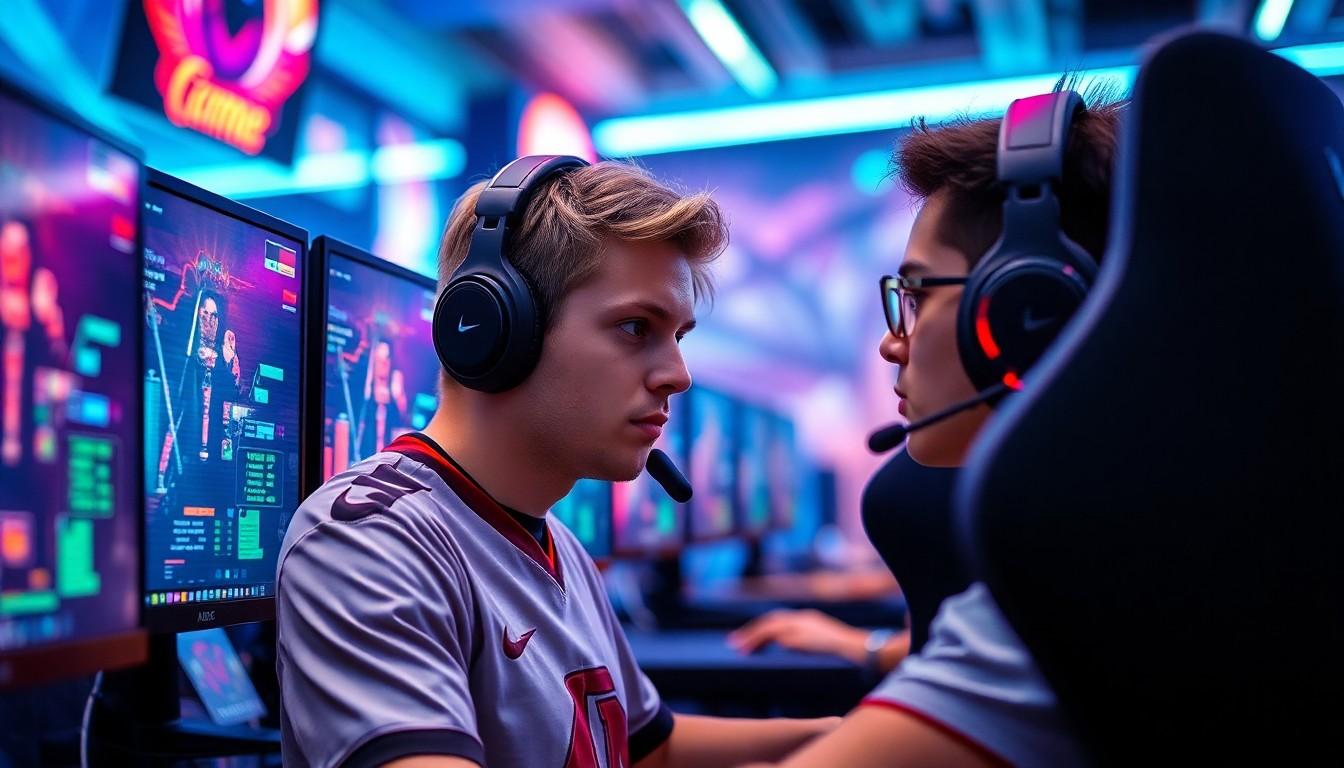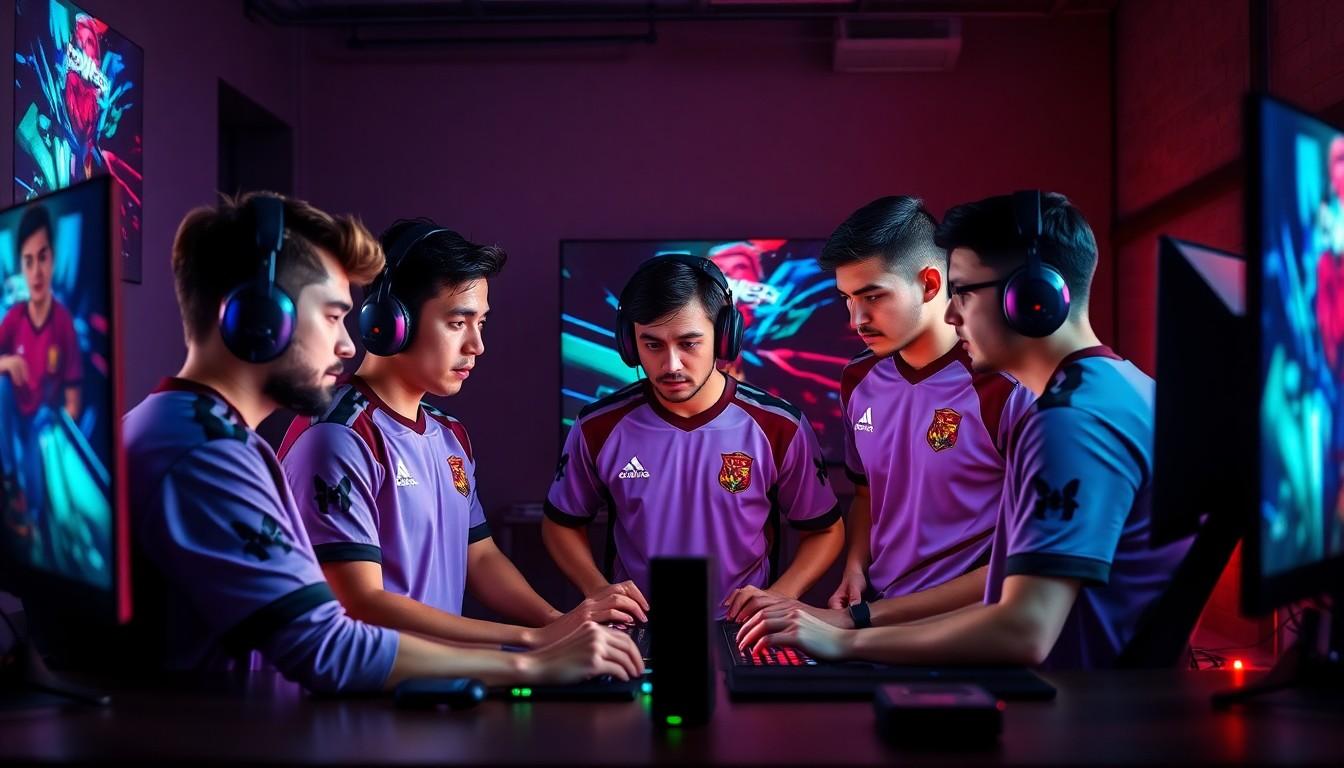Phone:
(701)814-6992
Physical address:
6296 Donnelly Plaza
Ratkeville, Bahamas.

In the fast-paced world of esports, winning isn’t just about having the best players; it’s about having the best strategies. Think of it like a game of chess, but with more explosions and less time for pondering your next move. Teams that thrive are those that blend skill with cunning tactics, turning every match into a thrilling spectacle.
From sneaky flanks to coordinated team fights, understanding the art of strategy can make or break a team’s chances of victory. It’s not just about pressing buttons; it’s about outsmarting the competition while keeping a straight face. Dive into the world of esports team strategies and discover how these masterminds navigate the digital battlefield, proving that brains can indeed outplay brawn—especially when there’s a championship title on the line.
Successful esports teams rely on well-defined strategies. Team composition plays a crucial role, influencing how players approach battles. Balance among roles such as support, damage dealer, and tank is essential for maximizing effectiveness.
Utilizing map control enhances opportunities during gameplay. Teams often establish control points to restrict enemy movements and secure advantages. Effective communication among team members further amplifies this strategy, leading to coordinated efforts during critical moments.
In addition, adapting strategies in real-time is vital. Players frequently analyze opponents’ tactics and adjust accordingly. Analyzing enemy patterns allows teams to anticipate actions and create counterplay opportunities.
Coordinated team fights represent another core strategy. Timing attacks and using ultimates in sync can lead to dominant victories. Practicing these maneuvers builds synergy, fostering trust among players.
Sneaky flanks catch opponents off guard. Teams often designate players to position themselves strategically behind enemy lines. This tactic disrupts formations, creating openings for other teammates to exploit.
Data-driven decision-making enhances strategies based on performance metrics. Teams track statistics like kill-to-death ratios and objective control to refine their approach. Applying historical match data helps identify successful patterns and weaknesses.
Ultimately, cohesive strategies define competitive edge in esports. Mastering coordination, communication, and adaptability places a team ahead of competitors. Understanding these strategies empowers teams to excel in high-stakes environments.

Successful esports strategies hinge on several critical components, including team composition and role assignments. These elements significantly impact a team’s ability to execute complex plans in high-pressure situations.
Team composition focuses on balancing roles like support, damage dealer, and tank. A balanced team fosters synergy, allowing players to cover each other’s weaknesses. Compositions featuring frontline tanks protect fragile damage dealers while support characters provide healing and crowd control. Diverse roles also enable adaptability during matches, enhancing strategic flexibility. This balance is noticeable in games such as League of Legends and Dota 2, where well-rounded compositions consistently outperform heavily one-sided teams.
Role assignments clarify responsibilities for each player, enhancing teamwork and coordination. Each player must understand their position within the team and execute their duties effectively. In competitive settings, flexibility in role assignments proves essential for adapting strategies mid-game. Communication is vital, as players must relay information on enemy movements, cooldowns, and tactical adjustments. Successful teams prioritize assigning roles based on strengths, leveraging individual skills to maximize performance. Clear role definitions lead to improved teamwork and greater chances of victory.
Communication plays a critical role in esports team dynamics, enabling players to execute strategies effectively and adapt to changing situations. Coordination enhances this communication, allowing teams to work seamlessly together.
In-game communication involves real-time exchanges between teammates. Players use voice chat or text to convey crucial information. Sharing enemy positions and cooldown timings contributes to strategic advantages. Clear callouts, such as directing teammates during engagements or retreats, help synchronize actions. Teams often establish specific commands for clarity. Frequent engagement fosters trust, ensuring everyone stays informed about tactical shifts. Regular practice emphasizes the importance of articulation. Maintaining a calm and focused demeanor during discussions allows for efficient decision-making under pressure.
External communication encompasses discussions outside the gameplay. Players, coaches, and analysts engage in meetings to review performance and refine strategies. Constructive feedback sessions identify strengths and weaknesses. Team meetings on strategy or upcoming opponents equip players with insights for preparation. Social media and community platforms engage fans, providing updates on team dynamics. Collaborating with sponsors and organizers builds team reputation and relationships within the esports community. Establishing protocols for player interactions with external entities helps maintain professionalism. Scheduling consistent check-ins ensures everyone remains aligned on goals and expectations.
Adaptability is key in esports, enabling teams to adjust strategies against varied opponents effectively.
Reading the opponent requires keen observation of their playstyle. Patterns often reveal vulnerabilities, allowing teams to exploit weaknesses. Analyzing movements and attack timings gives insight into strategies. Teams use this information to develop counter-strategies tailored to exploit these gaps. For example, if an opponent frequently executes aggressive flanks, a defensive formation can mitigate threats. Highlighting tendencies helps teams pivot their approach, increasing the probability of success. Awareness of enemy strategies, combined with quick decision-making, empowers teams to turn the tide in critical moments.
Adjusting tactics mid-game plays a crucial role in competitive outcomes. When unexpected situations arise, adaptability ensures that teams maintain momentum. Players assess real-time dynamics and shift their roles as needed. An example includes switching from an aggressive push to a defensive hold when the enemy strikes unexpectedly. Communication becomes essential during such transitions, ensuring everyone is aware of changes. Flexibility can lead to opportunities, allowing teams to surprise opponents and claim victories. Mastering these adjustments often reflects experience and enhances overall team performance.
Team Liquid exemplifies success through strategic adaptability. They implement versatile team compositions based on the meta, ensuring players can excel in multiple roles. Notably, Liquid’s ability to adjust strategies mid-series has led to impressive tournament victories, showcasing their understanding of the game’s dynamics.
Cloud9 emphasizes thorough analysis and preparation. Before each match, they conduct in-depth reviews of opponents’ gameplay. This preparation allows Cloud9 to develop targeted counter-strategies, which often exploit the weaknesses of their rivals. Their dedication to research enhances decision-making during high-pressure situations.
G2 Esports focuses on communication and synergy. Established frameworks for in-game callouts ensure seamless coordination during engagements. Each player knows their role, which fosters quick responses and efficient teamwork. G2’s emphasis on trust among teammates enhances their overall performance in critical moments.
FaZe Clan demonstrates the importance of individual skill within a cohesive strategy. They balance star players with vital support roles, creating a well-rounded team dynamic. Each player’s unique playstyle is integrated into the overall strategy, amplifying team effectiveness in competitions.
T1 takes a disciplined approach to training and game analysis. Their rigorous practice schedules include both individual and team sessions, which sharpen skills and ensure collective growth. Regular feedback loops allow T1 to address issues promptly, resulting in continuous improvement.
By studying these successful esports teams, key strategies emerge. Adaptability, preparation, communication, and individual skill integration enhance a team’s chance of victory. Understanding these principles allows upcoming teams to refine their own strategies, aiming for successes in the competitive esports landscape.
Mastering esports team strategies is essential for any team aiming for success. It’s clear that skill alone isn’t enough; strategic thinking and effective communication are vital components of a winning formula. The ability to adapt and counter opponents’ tactics can turn the tide of a match.
As teams analyze their performances and refine their strategies, they create a foundation for growth and improvement. The insights gained from studying top teams can inspire emerging players to develop their own unique approaches. In the fast-paced world of esports, cohesive strategies that prioritize teamwork and adaptability will always provide a competitive edge.